Latest posts
Making sense of pangenome networks
Hans Zauner - October 15, 2018
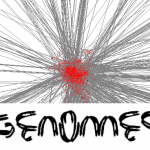
Navigating Pangenome’s Labyrinth In the two decades since the first genomes were sequenced, with the exponential growth of new and closely related genomes it has become increasingly difficult to visualise and compare their structure. Particularly with the large diversity and difference in genes within microbial genomes. A new computational pipeline, published in GigaScience, makes it […]
Toads and toxins: The genome of the invasive cane toad
Hans Zauner - September 24, 2018
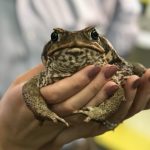
The cane toad Rhinella marina is native to Central and South America. But thanks to humans and the sugar cane trade, the species now thrives also in Australia and other places where it doesn’t belong. The invasive species comes with an unpleasant surprise for native Australian predators, such as snakes or freshwater crocodiles: R. marina kills them with its […]
Of Mice and Men (and Monkey) Microbiomes.
Scott Edmunds - August 31, 2018

New work in GigaScience introduces the macaque monkey to the microbial gene catalogue club, with the monkey microbiome joining other model organisms.
How Green Became the New Black – Plant Phenotyping Developments Down Under
Nicole Nogoy - July 17, 2018
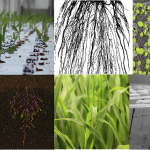
With the upcoming 5th International Plant Phenotyping Symposium (IPPS) set to take place Oct 2-5, in Adelaide, Australia, we look at how the plant phenotyping community has progressed over the last decade and how we can potentially address the issues surrounding data sharing, re-use, and reproducible research. As we live in an increasingly data-driven era, […]
A new look GigaDB. Data publishing gets more interactive and FAIR.
Mary Ann Tuli - July 6, 2018
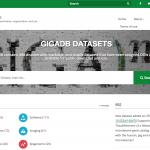
Web tools and FAIR principles at the core of Life Science publishing in GigaDB As we continue to push the envelope for publishing in the life sciences we have been listening to our users about the things that should be incorporated into the publication process. That is why we have taken the opportunity to not […]
Meetings, Meetings And Extended Deadlines For The ICG-13 Prize
Scott Edmunds - June 14, 2018
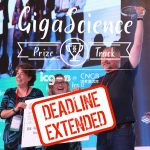
Due to popular demand we are keeping the paper submission deadline of our ICG prize track open until the end of the month. We’ve already received more submissions than our first competition last year, and a number of other submitters have been putting their finish touches to submission. Its easy to submit as you just […]
Preprint.Space, The Final Frontier
Scott Edmunds - May 24, 2018

Open Science Trek, The Next Integration Fostering and promoting more open and transparent science is one of the goals of GigaScience, and to do this we have been big promoters of open peer review as well as preprints servers. Combining both of these, Academic Karma was the one of the first platforms to focus on […]
Enter the 2nd GigaScience Prize Track at ICG-13
Scott Edmunds - May 9, 2018

Call for Submissions – Win Prizes and Join us in Shenzhen for ICG-13 Being co-published by BGI we are regular participants at their yearly ICG (International Conference on Genomics) conference in Shenzhen. Since the very first meeting in 2006, ICG has grown to become one of the most influential annual meetings in ‘omics’ research, and […]
GigaScience Wins 2018 PROSE Award for Innovation in Publishing
Scott Edmunds - May 4, 2018
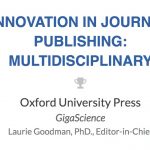
We at GigaScience are pleased to have won the 2018 the PROSE Award for Innovation in Journal Publishing in the multidisciplinary category, as innovation has been a key element in our goal to change how scientific publishing is done. The Association of American Publishers (AAP) has been giving awards for 42 years to recognize distinguished professional […]
DNA Day in the Jungle. Aaron Pomerantz on #JungleOmics
Scott Edmunds - April 25, 2018
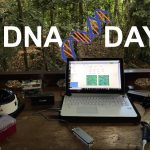
I’m a genomicist, get me into here. Today is DNA Day, commemorating the day in 1953 when Watson, Crick, Wilkins, Franklin et al. published their Nature papers on the structure of DNA, as well as the day in 2003 that the completion of the Human Genome Project was declared. Or at least when the project […]